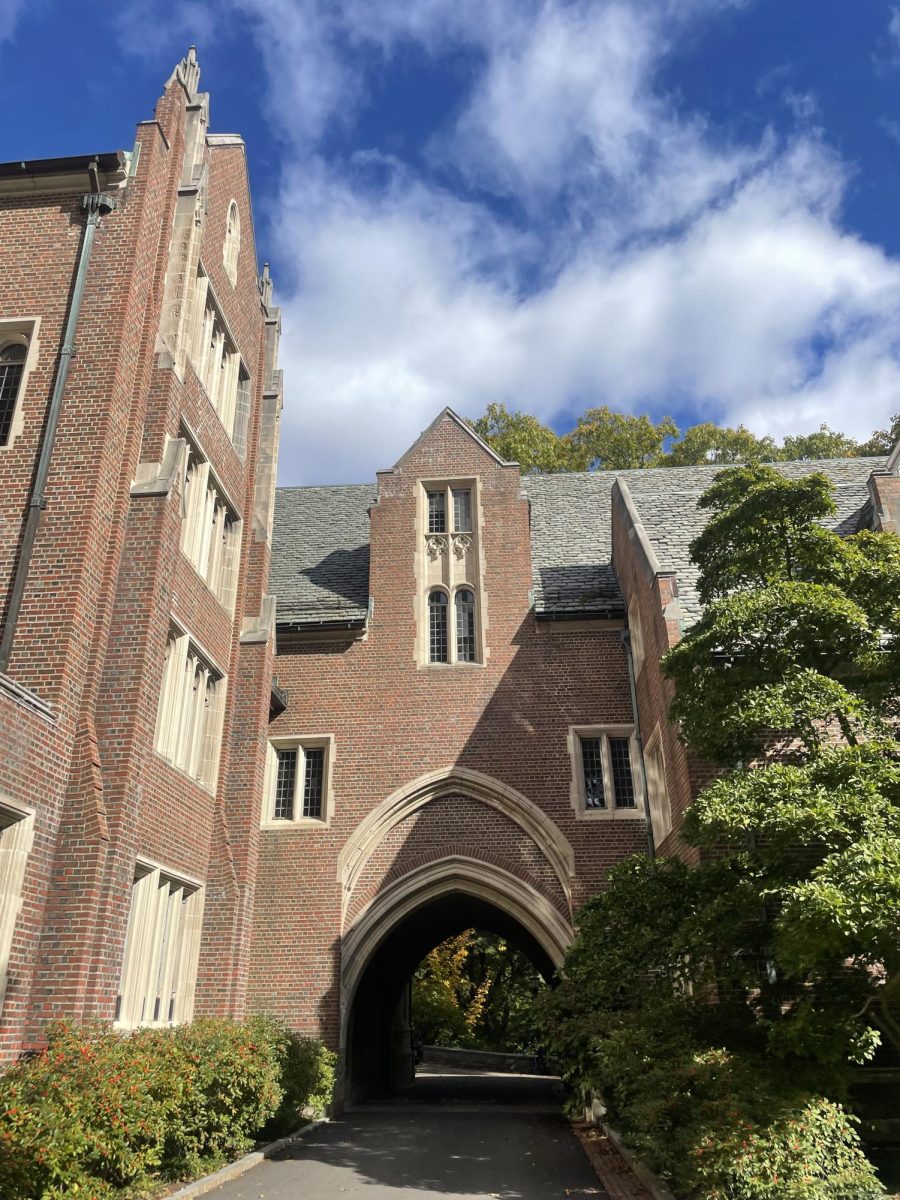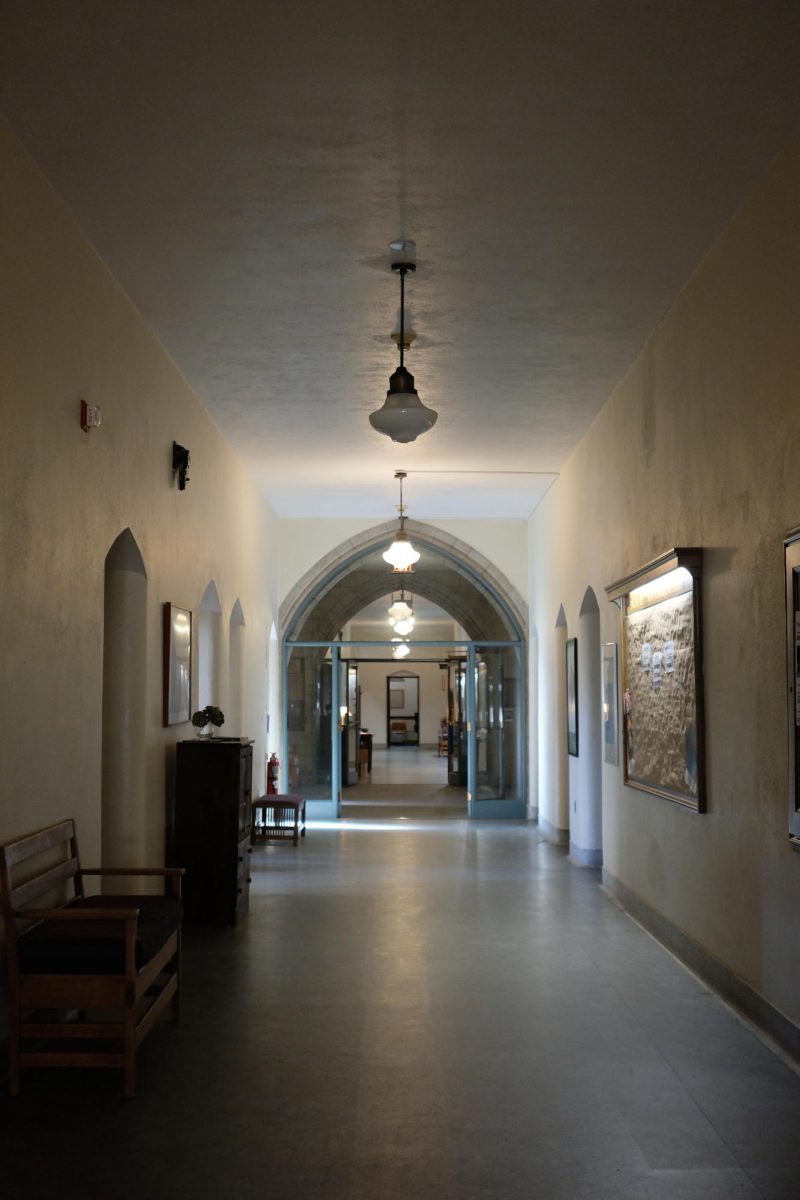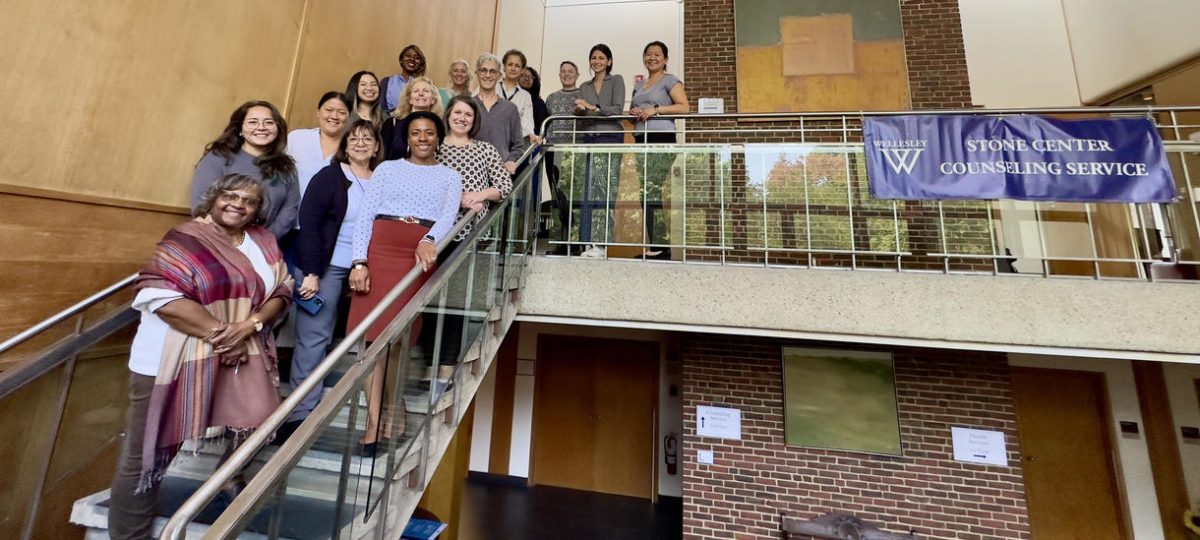On Saturday, Oct. 30, a team of Wellesley students embarked on an archaeological excavation at the site of what was once College Hall. The month-long dig is the brainchild of anthropology professor Elizabeth Minor ’03, who conceived the idea as a unique opportunity for her introductory-archaeology students to engage in field work. Minor, who has been involved in excavations in Egypt and Sudan, has long held an interest in the history of the Hall, which housed many of the school’s most important spaces until fire destroyed the building in March of 1914. More than a century later, Minor and her students are working to uncover objects which will provide them a new lens to study the lives of the students of Wellesley’s early history.
Over the course of four weekends in October, Minor and her team will excavate four 1-meter by 1-meter units near the former site of College Hall, hoping to discover artifacts that once belonged to the first generations of Wellesley students.
“My research goals are to see if the detritus from the fire and after can give us insights on daily life experiences that Wellesley students may not otherwise record. My main question is how the negotiation and expression of gender identity within an all-women context has changed over the past 100[-plus] years,” Minor explained.
The young archaeologists will undertake a time-consuming process which will fall subject to the whims of New England weather; students will only be able to excavate until the ground freezes. The archaeological team will work meticulously with trowels to dig, layer-by-layer, into their carefully-chosen sites, observing the soil and searching for artifacts. Displaced soil will then be transported to a rudimentary sifting device which is manually agitated, allowing the soil to fall through wiring while preserving any sizable objects.
Some students, like Tara Kohli ’21, are cautiously optimistic regarding possible discoveries.
“On the one hand, I think there is potential for some charred objects to be found, and likely bits of facade or stones from the complex, a personal trinket or two… on the other hand, there’s a voice in my head that wonders if we will find anything at all,” Kohli said.
Minor ’03 stresses the likelihood that the excavation will uncover mundane objects, most valuable in their ability to provide insights into daily life.
“It’s rare that we find a single object that tells a story about the past, more often in archaeology it’s looking at patterns in many fragments of everyday objects that gives us insights about daily life,” she continued.
Equally as important as the skills required to carefully uncover and acquire artifacts are the skills of documentation. Much of the students’ time will be spent recording the excavation process through measurements, drawings and photographs. Professor Minor set a high standard for the information her students collect.
“The goals are to be so detailed that 100 years from now, other researchers can use our documentation to do their own research,” she stated.
The destruction of College Hall was a formative moment in the school’s history, and served as the stimulus that would transform Wellesley into an incomparable force in women’s communication. At the time of the Hall’s demise, Wellesley was a relatively young institution, having graduated only 34 classes.
According to a 2014 Wellesley News interview with Art History Professor Jacqueline Musacchio, the fire came at a moment when women’s education was still regarded as a social experiment.
In the face of the momentous setback, however, the school and greater community rallied together to rebuild the College. By 1931, many of the school’s most iconic buildings were erected, including Sage Hall, Alumnae Hall, the Academic Quad, Tower, Claflin and Severance. Clapp Library was also expanded during this period.
Today, much of the Tower-Court complex stands on the former site of College Hall. Unsurprisingly, many Wellesley students have expressed concern over the potential disruptions the dig could pose to their studies. Minor recognizes the validity of these concerns and has worked with Grounds staff and representatives from Residential Life to determine the location and time for the excavation. Work on the project is limited to the midday, from 10 a.m. to 1 p.m., and exclusively on weekends. A web survey was disseminated to students which included spaces to voice concerns over potential disturbances.
Despite the concerns, Minor believes that the team’s adoption of “community-based archaeology” will lend the project the potential to benefit many more than the excavators themselves.
“The questions we have and the information we find have the potential to help Wellesley students think through their own experiences here. A hundred years ago, students also faced a huge adjustment as they built their own community of classmates, struggled through their studies, and then left to pursue their own life achievements,” she commented.
Nicole Tan ’20, one of Minor’s students and a member of the excavation team, shared similar sentiments regarding the questions the dig raises for students.
“We always think of Wellesley as steeped in tradition, so I think it’ll be interesting to see what has changed since a century ago, and what kind of rituals or activities the students of the time had as compared to today,” Tan said.
To Minor’s knowledge, her project constitutes the first systematic archaeological excavation to be carried out on Wellesley’s campus. However, other areas could possibly provide rife grounds for exploration in the future.
“Everyone has given me great tips about where other buildings or trash dumps are in the area. The library, chapel, and observatory are also areas that have been in use for a long time,” Minor said.
Students interested in the project and its findings are encouraged to visit the team in action or to contact Professor Minor at [email protected].





